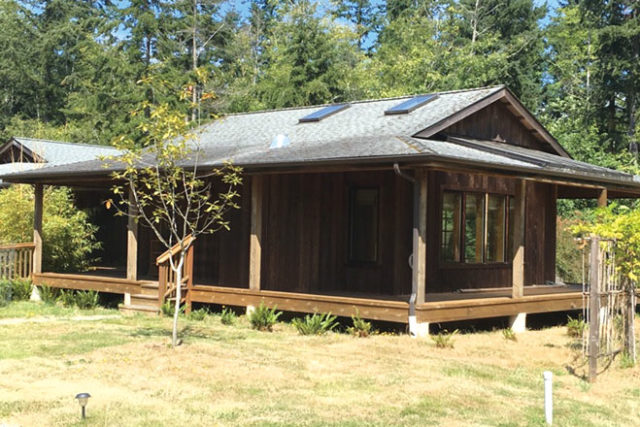By David Yamaguchi
The North American Post
On Saturday, Aug. 6, I had an evening social engagement to attend on Whidbey Island. As I had the entire day before the event to get there, it made sense to see something else on Whidbey en route that might be of interest to readers. The Japanese verb is “binjou-suru.” It means to take advantage of an opportunity.
To find out what there was, a week before I entered “Whidbey Japanese” into a search engine. The nonprofit destination that pops up most prominently is the Tahoma Zen Monastery.
“What is that?” I thought. “And how is it that I had not heard of it as a Seattle native?” Photographer in tow, I went to find out.
On arrival, having been welcomed in advance by caretaker-monk Tony “Dairyo” Fairbank but not finding him, we began by wandering the grounds. What we found is something of an East-Meets-West compound comprising a half-dozen, small, charming, Japanese-architecture inspired buildings.
Mr. Fairbank appeared while we were munching our lunches on the front porch of the unlocked office. He had fallen asleep in a back room, tired from leading an early-morning meditation session.
“What is it that he would want Seattle readers to know?” we asked. The main point is that there is a rural facility within driving distance of the city whose purpose is to serve as a place for Zen meditation.
Zen differs from the more widely practiced Pure Land Buddhism, Mr. Fairbank explained, in that the two use different approaches to enlightenment. While Pure Land employs rhythmic chanting (“Namu myoho renge kyo…” [Hail to the lotus sutra!], Zen relies on meditation. As a former scientist, I knew that both are pathways to achieve measurable brain tranquility.
As there are not many Zen centers outside of Japan, users of the Whidbey Island monastery mostly come from Whidbey and from greater Seattle. However, during quarterly week-long sessions when Japan-based abbot Shodo Harada is present, others attend from California and internationally.
Between the quarterly events, the monastery sponsors Zen-centered lectures and the like, which are delivered both on-site and in Seattle. The next talk, by Thomas Yuho Kirchner, an author of several books on Buddhism, is scheduled for Friday, Aug. 26 in Seattle (Nalanda West, 3902 Woodland Park Ave N, 7 – 8:30 p.m., 206-529-8258) and at the Whidbey Island monastery on Aug. 28 (1 – 3 p.m.).
I asked how I could help the monastery as a freelance writer. According to their website, their activities are solely supported by voluntary donations. Are their facilities available for retreats, for example, those of Seattle nonprofits?
No, Tony replied. They strive to remain true to their purpose.
Would they welcome inquiries, then, from members of the Seattle Buddhist community, for example, the Seattle Betsuin? Yes. Tony knew that group’s minister, Don Castro, by name.
Now at their 20th anniversary, the Tahoma monastery and its programs are still very much “a work in progress.” For example, although it was a beautiful summer weekend day, the only cars present were Tony’s and ours. Besides the three of us, the only living creature we saw on the grounds was a young, spotted deer.
In the meantime, caretaker-monk Dairyo leads meditation sessions, “zazen,” grows vegetables, and labors to maintain and improve the grounds.









